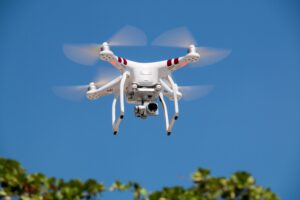Line of sight limit prevails
 With the growing use of drone aircraft by insurance companies to help with property inspection and damage claims, we’ve been following with interest efforts by the Federal Aviation Administration to develop rules on their use. Final Rules were just issued this past week and we have the details.
With the growing use of drone aircraft by insurance companies to help with property inspection and damage claims, we’ve been following with interest efforts by the Federal Aviation Administration to develop rules on their use. Final Rules were just issued this past week and we have the details.
The two final rules govern Operation of Small Unmanned Aircraft Systems Over People and Remote Identification of Unmanned Aircraft under the new Part 89 in Title 14 of the Code of Federal Regulations. Together they provide guidance for using unmanned drones of under 55 pounds over people and vehicles, and at night, without obtaining a waiver.
Drones are allowed to fly over people in what’s described as an “open-air assembly.” That includes flying over their heads, back and forth, and circling, so long as the drone remains above some part of the assembly. A drone may operate over moving vehicles so long as it’s not in sustained flight over them, unless it’s within a closed or restricted-access site and people in the vehicle are properly noticed.
Drones must transmit remote identification of the drone itself and the base station controlling it. But in a change from earlier proposals, the rule will not require the more costly internet connection or transmitting the information to a network service provider. FAA regulators left the existing definition of “visual line of sight” intact. They did not grant an exemption for operating beyond line of sight that was sought by insurance interests.
Piloting a drone at night is permitted under the rule. The pilot must pass an initial test and recurrent training. The aircraft must have anti-collision lighting visible at least three statute miles away with flash.
The final rules are expected to be formally published this month with an effective date 60 days later.
LMA Newsletter of 1-18-21

